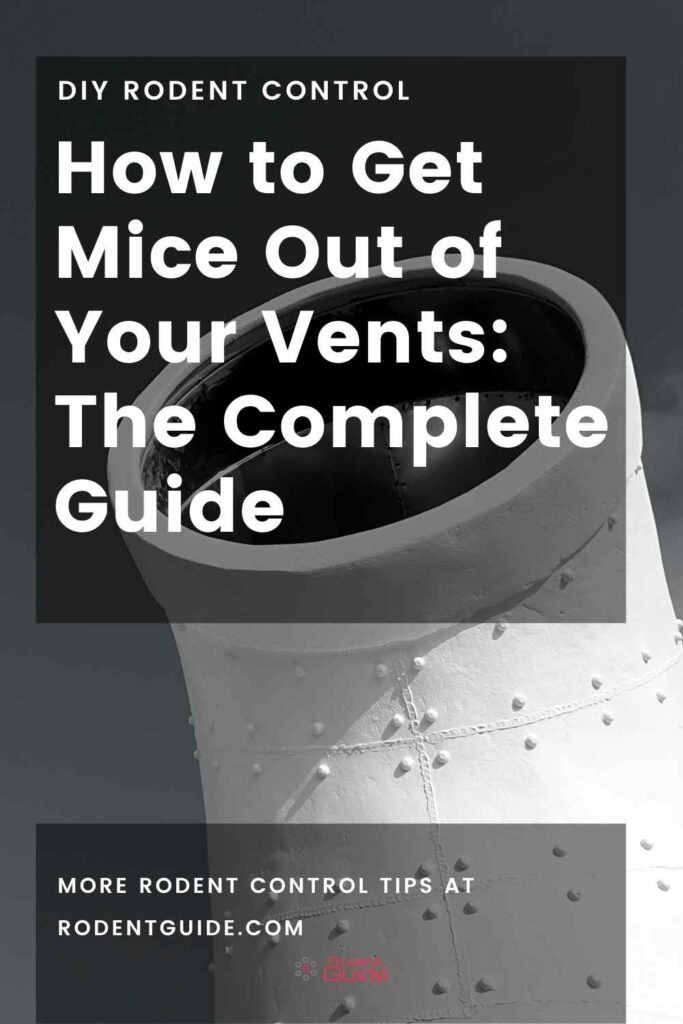Mice can be a huge nuisance, especially when they start invading your home. If you’ve been having problems with mice getting into your vents, you’re in luck!
In this blog post, we will teach you how to get rid of those pesky critters for good. We’ll go over everything from identifying the signs of a mouse infestation to taking the necessary steps to evict them from your home.
So read on and learn how to protect your vents from these unwanted guests!

7 Step Strategy to Get Rid of Mice in Your Vents
1. Inspect your vents for signs of mice
If you’re having problems with mice getting into your vents, it’s essential to inspect your vents and HVAC system for signs of an infestation. It could be something else crawling in your vents entirely!
Look for:
- Mouse droppings
- Mouse urine
- Gnawed items
Listen out for:
- Gnawing
- Scurrying
- Squeeking
If you see any of these signs, you need to take action to get rid of the mice in your vents, air ducts, and maybe even in the rest of your home.
2. Clean the vents and remove any debris that may be attracting the mice
Cleaning your vents is an essential step in getting rid of mice. Make sure to remove any debris attracting the rodents, such as leaves, branches, or nests.
Use a vacuum cleaner to remove any dust or dirt, and then wipe down the vents with a damp cloth.
3. Plug the vents with steel wool to prevent the mice from entering

The next step is to figure out how the mice get into your vents. This can be tricky, but it’s essential to do this so you can seal up any entry points and prevent them from coming back.
Mice can squeeze through tiny spaces, so check your vents for cracks or holes. If you find any, seal them up with steel wool or caulk.
You should also check to see if your vents have screens. If they do, make sure that the screens are in good condition and are not torn or have holes.
4. Set up mouse traps near the vents to catch the mice
Once you have determined that there are mice in your vents, you will want to set a mouse trap near the vents to catch the mice. You can use various traps, but the most common type is the snap trap. These traps work by snapping shut when the mouse walks across them, trapping the mouse inside.
You will want to set several of these snap traps around the perimeter of your vents. Only use snap traps in areas where pets and kids will not access them.
Another type of trap that you can use is a live trap. These traps work by baiting the trap with food and then closing the door behind the mouse when it enters. The mouse is then trapped inside but unharmed. You can then take the mouse and release it outside.
Whichever type of trap you choose to use, check the traps regularly and remove any caught mice as soon as possible. Mice can carry diseases, so it is crucial to handle them with care. If you have any questions about safely removing a mouse from a trap, please consult your local pest control company.
5. Use natural mouse repellent options near your vents

There are various natural mouse repellents that you can use near your vents to help keep the mice out. Some of these include:
- Peppermint oil: sprinkle a few drops of peppermint oil near the entrance to your vents. The strong smell will deter the mice.
- Cayenne pepper: mix cayenne pepper with water and spray it around the entrance to your vents. The spicy smell will keep the mice away.
- Cloves: place a few cloves near the entrance to your vents. The strong scent will repel the mice.
- Cinnamon: sprinkle some cinnamon around the entrance to your vents. The sweet smell will deter the mice.
- Garlic: place a few cloves of garlic near the entrance to your vents. The strong smell will repel the mice.
These are just a few of the many different natural mouse repellents that you can use to help keep the mice out of your vents. Experiment with various options to see what works best for you.
6. Identify and seal all entry points
Mice can get into your house through tiny openings, so it’s essential to seal any potential entry points. Look for any cracks or holes in your walls, ceilings, and floors, and use caulk or other sealants to close them up.
You should also check your doors and windows to ensure they’re properly sealed. Mice can easily squeeze through if you have gaps around your door and window frames.
To further prevent mice from getting into your home, you can install door sweeps and weather-stripping. These will help create a tight seal around your doors and windows, making it much harder for mice to get inside.
7. Call a professional if you’re having trouble getting rid of the mice on your own

If you’re having trouble getting rid of the mice, you may want to call a professional pest control company.
They will be able to help get rid of the mice and also provide advice on how to prevent them from coming back.
Pest control companies are very experienced in dealing with a rodent infestation, so they will know exactly what to do, and the best ones even offer you some preventative tips!
Can mice I’ve in my vents?
Yes – mice can live in your vents.
Your vents offer the mice comfort and protection from you and predators. They can also drag items into your vents to make a nest.
The longer they are in your vents, the more damage they can do, so it is best to get them out as soon as possible.
There is also a risk of dealing with a mouse nest or even dead mice in your HVAC system, especially if they are near the heating ducts. That can be very costly.
Can mice get access to my home through vents?
It is more bad news, I’m afraid!
Yes – mice can use your vents as an entry point into your home, so you must get rid of mice from your vents asap.
Conclusion
So, there you have it. A few ways to get rid of mice in your vents. We hope you found this information helpful.
The first step is to identify where the mice are getting in. Once you know that, you can take steps to close up those entrances and keep the little critters out of your vents for good.
Follow these simple steps, and soon your vent will be mouse-free.
Good luck!








